Woodland Trees
From Evergreen to Deciduous
Order Online from Mid-August for Delivery from Autumn until Mid-March
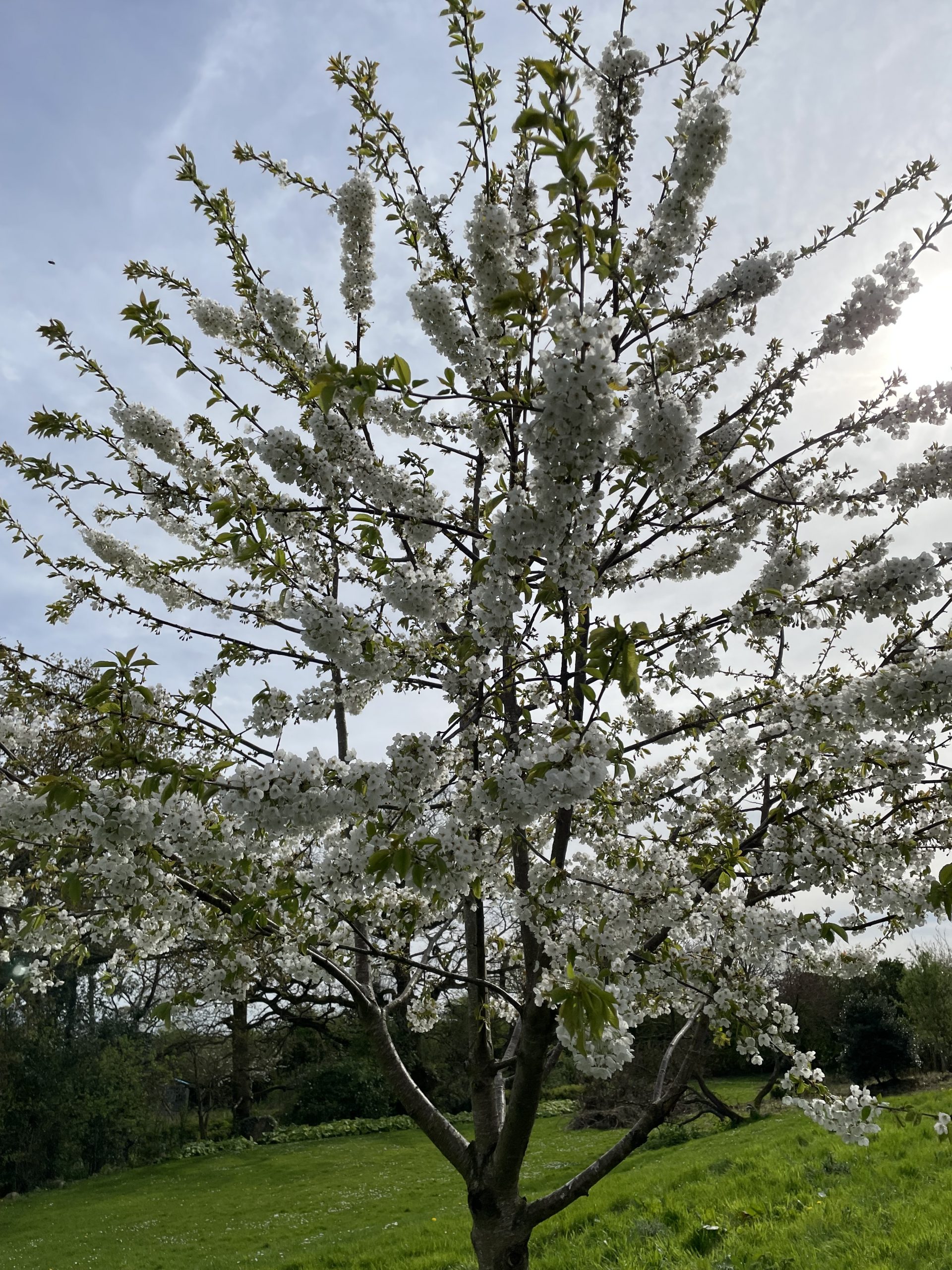
Wild Cherry
Silver Birch (Betula pendula) Deciduous
Silver Birch, Betula pendula, has to to be one of the most recognisable trees. It stands out from the others because when it grows towards maturity it shows off with its amazing drooping branches and with its light green triangular shaped leaves hanging on spidery twigs. The leaves are easily identified as Silver Birch by their serrated edges and the twigs are quite rough to the touch. The trunk is equally recognisable as a mature tree it is basically silver, but over some years of growth the white paper bark gives way to the rugged bark underneath causing brown scars around the trunk with a very special natural effect.
Wild Cherry (Prunus avium) Deciduous
Wild Cherry, Prunus avium, is a lovely ornamental tree. It can be planted in various scenarios. The Spring blossom is outstanding which produces dark red cherries most seasons. The dark green leaves create shade during summer months which then turn into attractive autumn colours. So, a single Wild Cherry can take a central role in any sized garden. It can also be planted as a group in, say, threes or fives to create a very special area for seating. It also enhances garden hedge rows by planting along the inside of a hedge. The trunk of the tree is also attractive during the winter period.
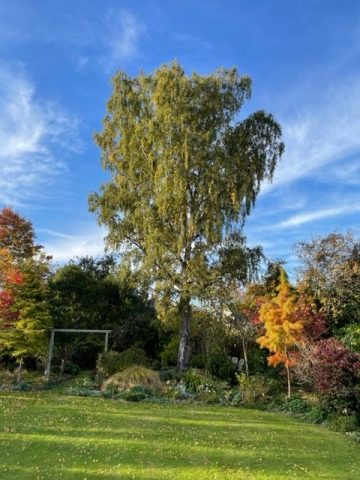
Silver Birch
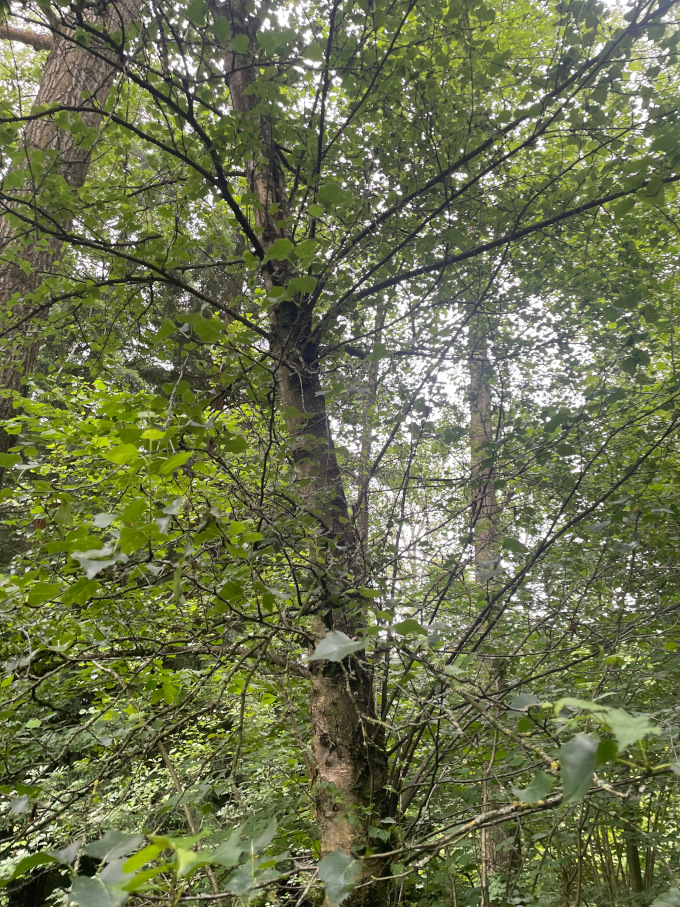
Downy Birch
Scots Pine (Pinus sylvestris) Evergreen
Planted a few meters apart it makes a very good screen and shelter belt. I have used this tree to form divisions between the fairways on our par 3 golf course. It is amazing to see how many animal species use it to sustain their lives. I would recommend one or two of these trees in any medium to large sized garden. Plant in any soil type, including rocky soil and avoid wet areas.
Downy Birch (Betula pubescens) Deciduous
This tree is found growing in many environments where other species cannot cope. It is very popular along motorway embankments, around industrial estates, street planting, and also medium sized gardens. It grows into a lovely tree If given the space, around 8/9 meters high, the branches eventually droop showing off very delicate leaves. It is relatively fast growing and creates a good natural wind break. Downy Birch grows well in all soil conditions but may need watering in it's first years if drought conditions persist.
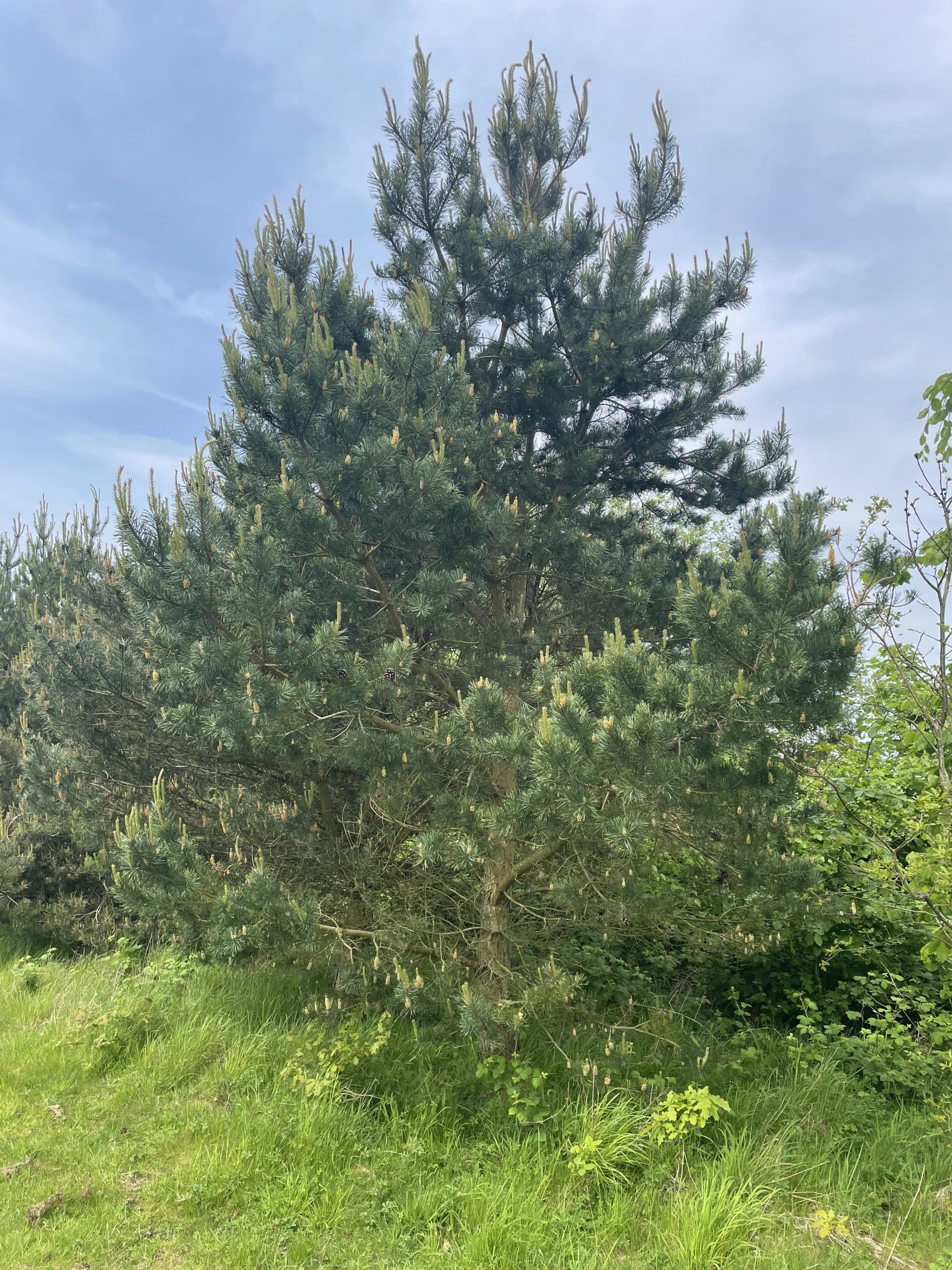
Scots Pine
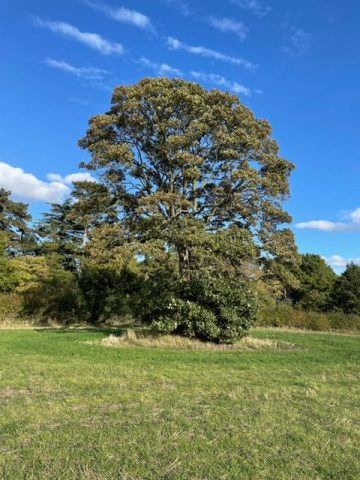
Norway Maple
Mountain Ash (Sorbus aucuparia) Deciduous
Mountain Ash, Sorbus aucuparia, a brilliant species in my opinion. It works everywhere in gardens, woods, hedgerows, streets, parkland. It has something to show for itself right through the growing season. In the spring it has beautiful blossom and through the summer it produces an amazing array of berries every shade of red and orange possible. The one problem is that the birds love the berries and when they ripen they are soon gone. However the leaves continually change colour throughout the Autumn.
Norway Maple (Acer platanoides) Deciduous
Norway Maple, Acer platanoide, is a deciduous tree only really for large gardens and parkland. It grows quickly and makes an attractive deciduous wind brake. The leaves are large and seem to change colour throughout the growing season, becoming very attractive in the autumn. The trunk is also attractive after a few years becoming a pale grey colour.
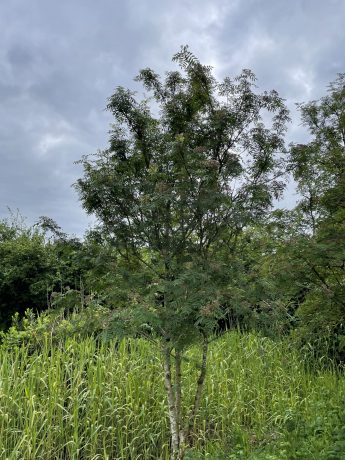
Mountain Ash
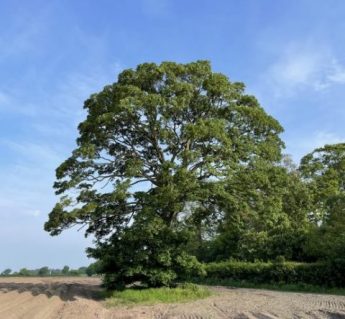
Oak
Oak (Quercus Robur) Deciduous
English Oak, Quercus robur, is probably the most recognisable tree in the UK. In my opinion it is the tree of the countryside. Ancient Oaks live in all areas of the country and I understand they can survive at altitudes of between one thousand and one thousand five hundred feet.
European Beech (Fagus sylvatica) Deciduous
European Beech, Fagus sylvatica, makes an excellent garden hedge, avenue of trees or just an individual tree in a big garden. Beech is safe for all animals I believe, but would need a fence to hold animals back from damaging it.
This is our second season growing Beech in a bed system. We have had more hand weeding than we hoped to have to carry out. Fortunately the bed is raised so not too much bending!
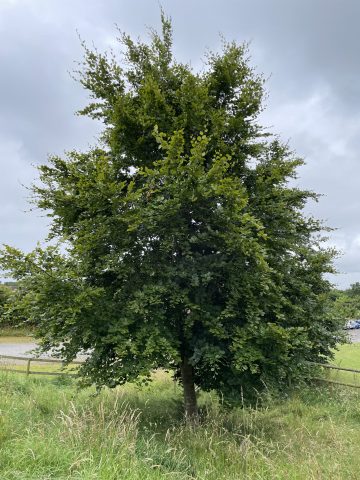
European Beech

Sycamore
Common Alder (Alnus glutinosa) Deciduous
Common Alder, Alnus glutinosa, is an exceptional tree. Its benefit to the environment and wildlife is invaluable and is always the first tree to colonise waste ground. It relies on unrestricted daylight to thrive, once bigger trees shade it the Alder will give up and die out. I have rarely seen one growing under another tree’s canopy in the centre of woodland. However many can be seen growing on the edge of the same wood. They will grow well in wet soil around ponds and river banks.
Sycamore (Acer pseudoplatanus) Deciduous
Sycamore, Acer pseudoplatanus, when mature is a spectacular tree. It is a major asset to the British countryside and urban areas. In areas where animals are reared and grazed outside, the canopy creates shelter in all weathers. In hot sunny weather they provide welcome shade for us humans in parks and public open spaces. I am told that the shedding seeds can cause harm to horses. The bark of the tree is quite unique, it is a patchy grey brown and peels showing off light grey wood beneath.
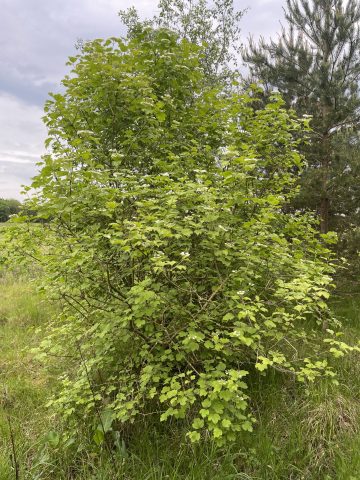
Guelder Rose
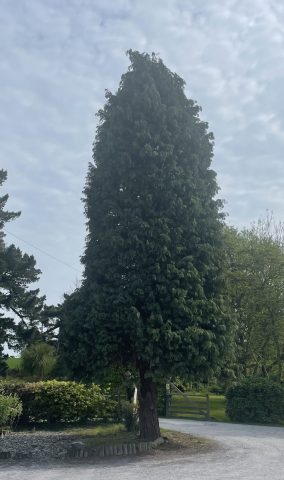
Lawsons Cyprus
Sweet Chestnut (Castanea sativa) Deciduous
Sweet Chestnut, Castanea sativa, has always been popular with anyone who enjoys eating nuts and knows where one is. I think it is like a marmite thing. I like to eat the nuts raw or roasted. When eating them raw the thin skin under the brown shell has to be scraped off to make the best of the nut. The problem with chestnuts is that when they first fall from the tree, the very spiky outer shell makes them difficult to gather, except for the squirrels! The Chestnut tree has many uses, thousands of acres are grown across the world for many uses including culinary requirements, furniture manufacturing and building structures.
Lawsons Cypress (Chamaecyparis lawsoniana) Deciduous
Lawsons Cypress, Chamaecyparis lawsoniana is an evergreen conifer that requires a medium to large garden. I think it is confused by most people with the Leylandii Cypress tree, and therefore does not get the attention it deserves. Lawsons Cypress grows into a beautifully shaped tree, given the room, and justifies its position in any garden. It is long living and can reach 50m high. It can be grown to make a perfect hedge and grows well in most good soil.
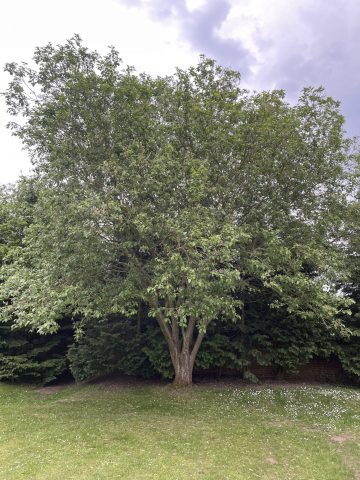
Goat Willow
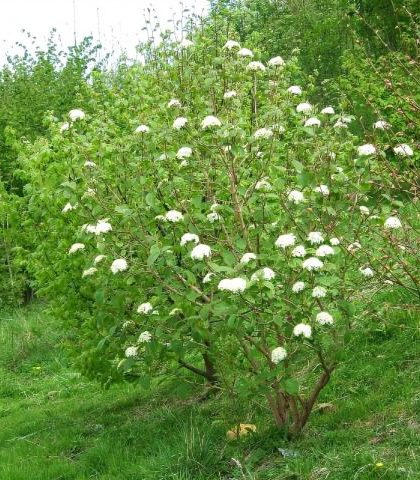
Wayfaring Tree
Spindle (Euronymus europaeus) Deciduous
Spindle tree, Euronymus europaeus, is a deciduous tree, it has beautiful Autumn colours especially when the fruit ripen, wildlife are attracted to the flowers . The wood is very hard and as the name suggests it was used to make spinning wheels. The mature tree is ideal for any size of garden. It will grow well in most soil types.
Wayfaring Tree (Viburnum lantana) Evergreen
Wayfaring tree, Viburnum lantana, is a deciduous bush or small tree. It will grow to around 4m in height. It produces creamy white flowers in the spring turning to green fruit at first, then red and eventually black. I am told the fruit is not toxic to humans or animals therefore it is an ideal bush for most sized gardens. I am fairly sure it will recover from winter pruning if required, however I would only trim a third each year rather than trim it all in one go. It will grow well in most soils but it does grow best in alkaline soil, so if planted in thin sandy soil it’s best to sprinkle some lime around the tree at planting.
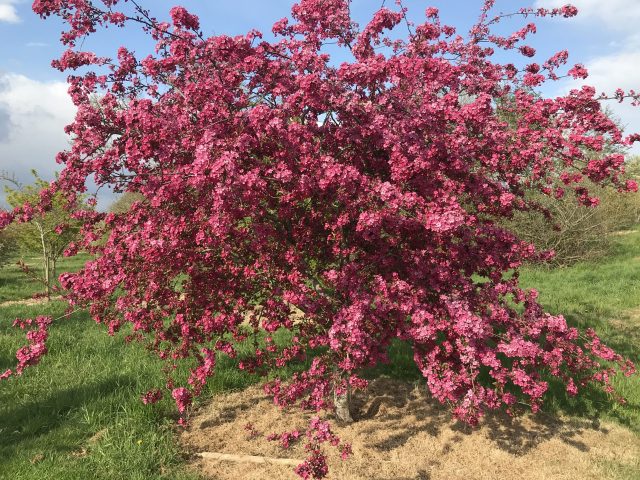
Spindle
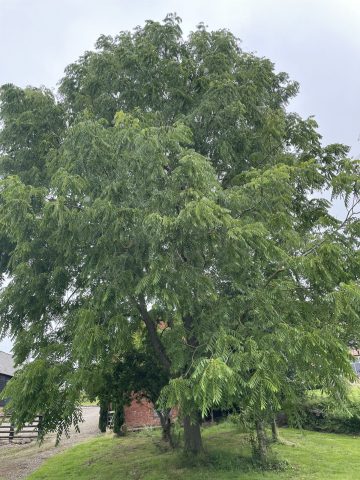
Black Walnut
Black Walnut (Juglans nigra) Deciduous
A wonderful tree, it can produce a much sought after nut crop, and timber. In the right hands it is one of the finest wood furniture species in the world. A mature tree is a magnificent site. As an individual tree it can reach 20 meters high with a large wide crown. It does need plenty of room to develop. It will do well in most soils and can be introduced into existing hedge rows.
Common Walnut (Juglans regia) Deciduous
English Walnut, Juglans regia, is worthy of a position in any medium to large sized garden. If given the room it has the ability to grow a large canopy which becomes very attractive after fifteen to twenty years, by which time it can be producing exceptionally lovely nuts. The leaves are large, distinctive, oval shapes, particularly attractive when on a sunny day the light streams through between the branches, a great position for a garden seat.
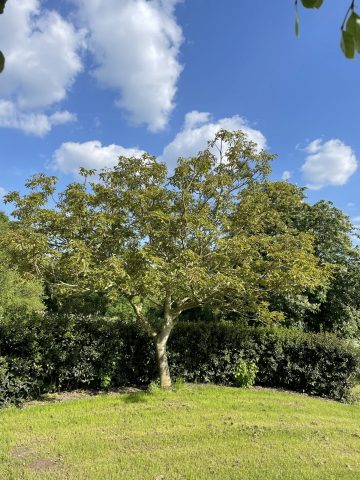
Common Walnut
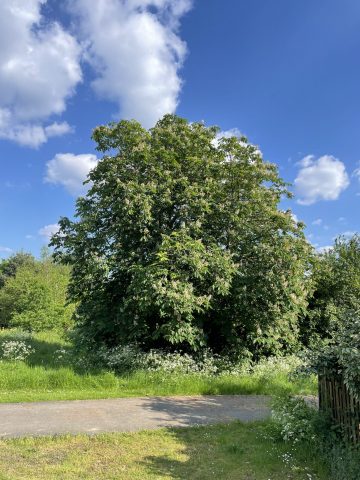
Horse Chestnut
Field Maple (Acer campestre) Deciduous
Field maple, Acer campestre. This deciduous plant will grow into a beautiful medium sized tree. It can be found growing in most old hedges. It does need a large garden or parkland to mature in and will grow in most soil types.
Horse Chestnut (Aesculus hippocastanum) Deciduous
Horse Chestnut, Aesculus hippocastanum, is only for big gardens, parkland, and fields it is ideal for sheltering stock from the elements . They can grow to nearly forty metres in height and live for over three hundred years. They produce very big leaves, five to seven individual parts to the leaves making a fan shape on the end of the twigs. The candle like flowers mostly white but with some yellow and pink make the tree very attractive in the spring. The canopy of a mature tree is second to none with a massive domed shape.
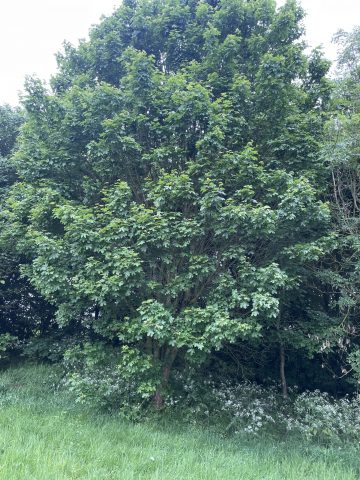
Field Maple
Wild Cherry (Prunus avium) Deciduous

Wild Cherry
| Height | 2m to 2.5m | 3m to 3.25m |
| Circumference | 6cm to 8cm | 8cm to 10cm |
Silver Birch (Betula pendula) Deciduous

Silver Birch
| Height | 2m to 2.5m |
| Circumference | 4cm to 6cm |
Downy Birch (Betula pubescens) Deciduous

Downy Birch
This tree is found growing in many environments where other species cannot cope. It is very popular along motorway embankments, around industrial estates, street planting, and also medium sized gardens. It grows into a lovely tree If given the space, around 8/9 meters high, the branches eventually droop showing off very delicate leaves. It is relatively fast growing and creates a good natural wind break. Downy Birch grows well in all soil conditions but may need watering in it's first years if drought conditions persist.
Scots Pine (Pinus sylvestris) Evergreen

Scots Pine
Planted a few meters apart it makes a very good screen and shelter belt. I have used this tree to form divisions between the fairways on our par 3 golf course. It is amazing to see how many animal species use it to sustain their lives. I would recommend one or two of these trees in any medium to large sized garden. Plant in any soil type, including rocky soil and avoid wet areas.
Norway Maple (Acer platanoides) Deciduous

Norway Maple
| Height | 2m to 2.5m |
| Circumference | 4cm to 6cm |
Mountain Ash (Sorbus aucuparia) Deciduous

Field Maple
| Height | 2m to 2.5m |
| Circumference | 4cm to 6cm |
Oak (Quercus Robur) Deciduous

Oak
| Height | 2.25m to 2.5m |
| Circumference | 6cm to 8cm |
European Beech (Fagus sylvatica) Deciduous

European Beech
| Height | 2m to 2.5cm | 2m to 2.5m |
| Circumference | 4cm to 6cm | 6cm to 8cm |
Sycamore (Acer pseudoplatanus) Deciduous

Sycamore
| Height | 2.25m to 2.5m |
| Circumference | 4cm to 6cm |
Common Alder (Alnus glutinosa) Deciduous

Guelder Rose
| Height | 3m to 3.5m |
| Circumference | 8cm to 10cm |
Lawsons Cypress (Chamaecyparis lawsoniana) Deciduous

Lawsons Cyprus
Lawsons Cypress, Chamaecyparis lawsoniana is an evergreen conifer that requires a medium to large garden. I think it is confused by most people with the Leylandii Cypress tree, and therefore does not get the attention it deserves. Lawsons Cypress grows into a beautifully shaped tree, given the room, and justifies its position in any garden. It is long living and can reach 50m high. It can be grown to make a perfect hedge and grows well in most good soil.
Sweet Chestnut (Castanea sativa) Deciduous

Common Alder
| Height | 2m to 2.5m |
| Circumference | 4cm to 6cm |
Wayfaring Tree (Viburnum lantana) Evergreen

Wayfaring Tree
Wayfaring tree, Viburnum lantana, is a deciduous bush or small tree. It will grow to around 4m in height. It produces creamy white flowers in the spring turning to green fruit at first, then red and eventually black. I am told the fruit is not toxic to humans or animals therefore it is an ideal bush for most sized gardens. I am fairly sure it will recover from winter pruning if required, however I would only trim a third each year rather than trim it all in one go. It will grow well in most soils but it does grow best in alkaline soil, so if planted in thin sandy soil it’s best to sprinkle some lime around the tree at planting.
Spindle (Euronymus europaeus) Deciduous

Spindle
Spindle tree, Euronymus europaeus, is a deciduous tree, it has beautiful Autumn colours especially when the fruit ripen, wildlife are attracted to the flowers . The wood is very hard and as the name suggests it was used to make spinning wheels. The mature tree is ideal for any size of garden. It will grow well in most soil types.
Common Walnut (Juglans regia) Deciduous

Black Walnut
| Height | 2.5m to 2.75m |
| Circumference | 6cm to 8cm |
Black Walnut (Juglans nigra) Deciduous

Common Walnut
A wonderful tree, it can produce a much sought after nut crop, and timber. In the right hands it is one of the finest wood furniture species in the world. A mature tree is a magnificent site. As an individual tree it can reach 20 meters high with a large wide crown. It does need plenty of room to develop. It will do well in most soils and can be introduced into existing hedge rows.
Horse Chestnut (Aesculus hippocastanum) Deciduous

Horse Chestnut
| Height | 2.25m to 2.5m |
| Circumference | 6cm to 8cm |
Field Maple (Acer campestre) Deciduous

Field Maple
Field maple, Acer campestre. This deciduous plant will grow into a beautiful medium sized tree. It can be found growing in most old hedges. It does need a large garden or parkland to mature in and will grow in most soil types.
What We Do
Hedging
View our different types of Hedging Plants
Woodland Trees
View our different types of Woodland Plants
Contract Growing
Service price on application